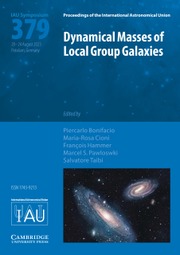Crossref Citations
This article has been cited by the following publications. This list is generated based on data provided by Crossref.
Baumstark, M.J.
and
Vinci, G.
2024.
Spiral-Elliptical automated galaxy morphology classification from telescope images.
Astronomy and Computing,
Vol. 46,
Issue. ,
p.
100770.

